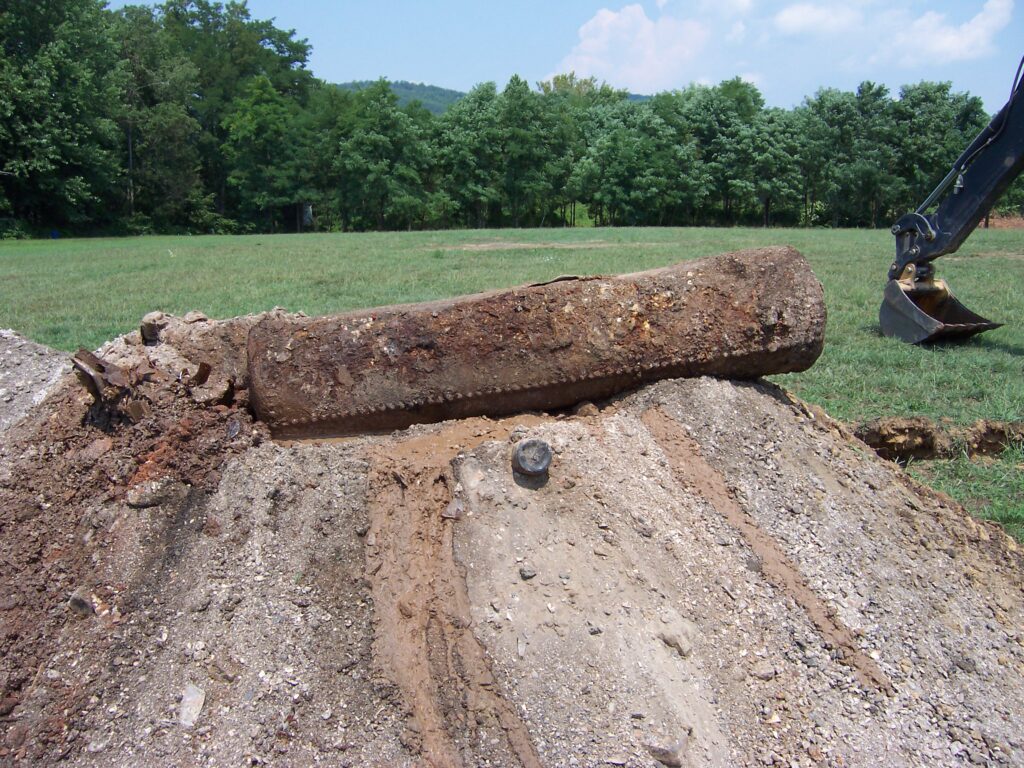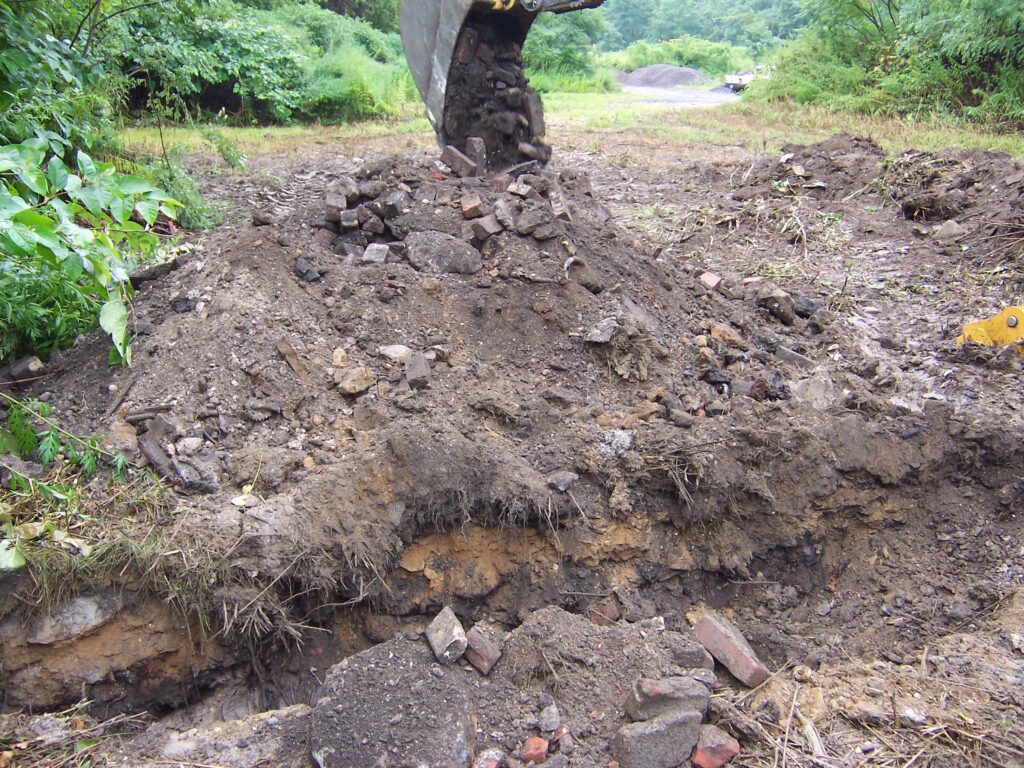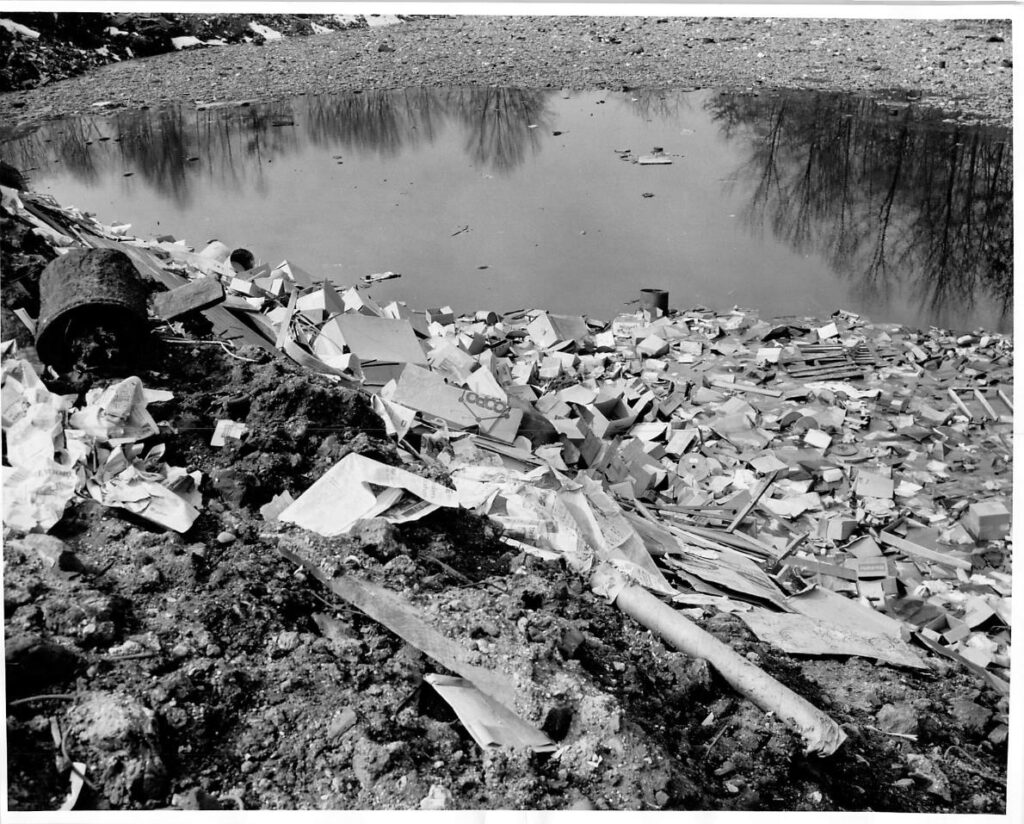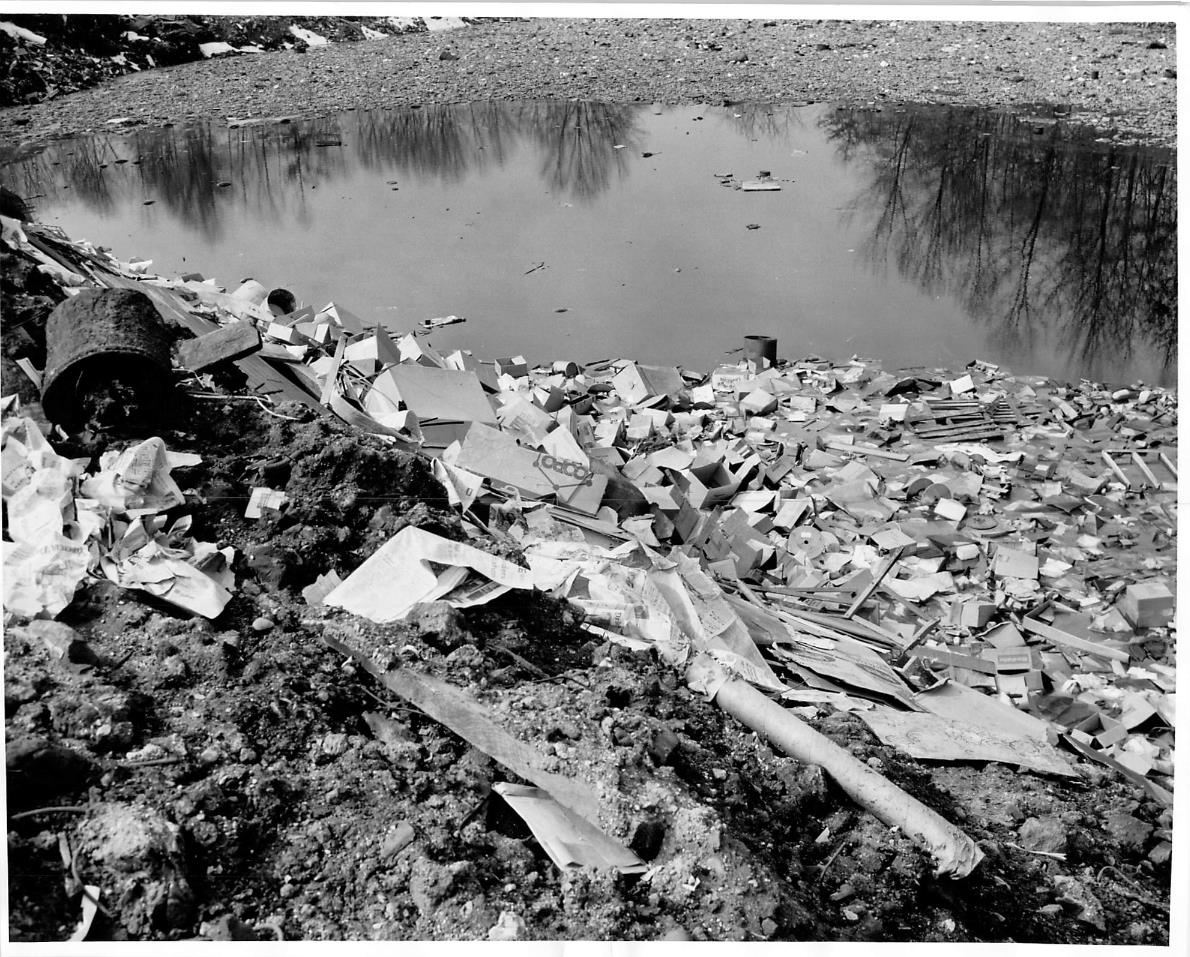By Tess Strayer, WPIT, Operations Manager, Environmental Consulting
We’ve all heard the old timer’s tales: taking the compost out to the pile and hauling the trash down to the old town dump. The dumps were often located on the edges of towns on undesirable or undevelopable land such as wetlands, swamps, former sinkholes, abandoned quarries, and unused strip mines, in an attempt to fill in these areas to make cheap, more “productive” land.
At other times, dumps were located along farm fields and stream banks. Primitive dumps preceded our modern and properly designed landfills and served to store vast amounts of refuse generated by small communities and towns. Once these dump locations were filled to a set point, it was considered best practice to burn the garbage within dump to reduce the spread of disease and vermin. The types of refuse varied and depended upon the surrounding industries and property uses. Many farmers had small dumps on their property to dispose of household appliances, farm equipment, bottles, and construction debris. Other town dumps located in urban areas contained bottles, industrial debris such as drums and batteries, municipal waste etc.
We are now paying a price for our forefather’s questionable disposal practices: historic dumps now create headaches with contamination, turning up during development and slowing down the process, costly cleanups, and more. As land development continues to accelerate, developers are exploring building opportunities on parcels that were previously used for as dumps.
Case Study #1
A northeastern Pennsylvania municipality completed a Phase I Environmental Site Assessment (ESA) on several city-owned parcels as part of a refinance transaction. At the time of the due diligence report, the parcels were used as recreational space and athletic fields. The Phase I ESA noted the presence of a historical auto salvage yard and a municipal landfill. Barry Isett & Associates, Inc. procured $70,000 in grant funding for the characterization activities which included a geophysical survey, test pit completion, soil sampling, and report preparation.
Preliminary surface soil samples collected from the athletic fields indicated very high levels of polychlorinated biphenyls (PCBs), lead, and arsenic. Isett proposed to complete test pits to observe what types of materials were dumped in the landfill. Within the test pits, Isett observed coal ash, scrap metal, foundry sand, automotive debris, tires, and municipal garbage. The municipal garbage consisted of glass bottles, bricks, clothing, and newspapers. Soil samples were collected from the test pits which revealed high levels of PCBs, cadmium, chromium, mercury, selenium, zinc, arsenic, and lead. PCBs are industrial products or chemicals. The PCB concentration in one sample was noted to be 91x the residential standard, indicating very hazardous conditions at the athletic fields. Due to the severity of the contamination and cost of cleanup, the site was taken over by the Pennsylvania Department of Environmental Protection (DEP) and listed in the Hazardous Site Cleanup Act (HSCA) program.


Case Study #2

Isett was contracted by a private developer to complete a Phase I ESA on several urban parcels that were developed as an abandoned manufacturing space and gas station. The intent was to redevelop these parcels into residential units. The Phase I ESA revealed the central portion of the site to have once been a quarry that mined iron. Later, the municipality converted this quarry into the town dump. Eventually, this dump was covered with soil and allowed the area to grow in and be used as a recreational area. To facilitate site characterization activities, Isett completed a geophysical survey, installed test pits and monitoring wells as well as collected soil, soil-gas, groundwater, and sub-slab vapor samples. Within the test pits and soil borings, Isett observed coal ash, slag, scrap metal, concrete, and municipal garbage. Over 100 soil samples were collected over a period of two years. An environmental covenant was filed for the site and the PA DEP issued an Act 2 Relief of Liability. The total cost of site characterization was over $210,000 and still includes annual monitoring.
Sensing a theme here? Due diligence activities such as Phase I and Phase II ESAs served critical roles in identifying and investigating former municipal dumps to understand subsurface impacts. Identifying these features early in the transaction process is key to helping clients understand the risks of purchasing an former municipal dump. Learn more by contacting our Environmental Consulting Department.
